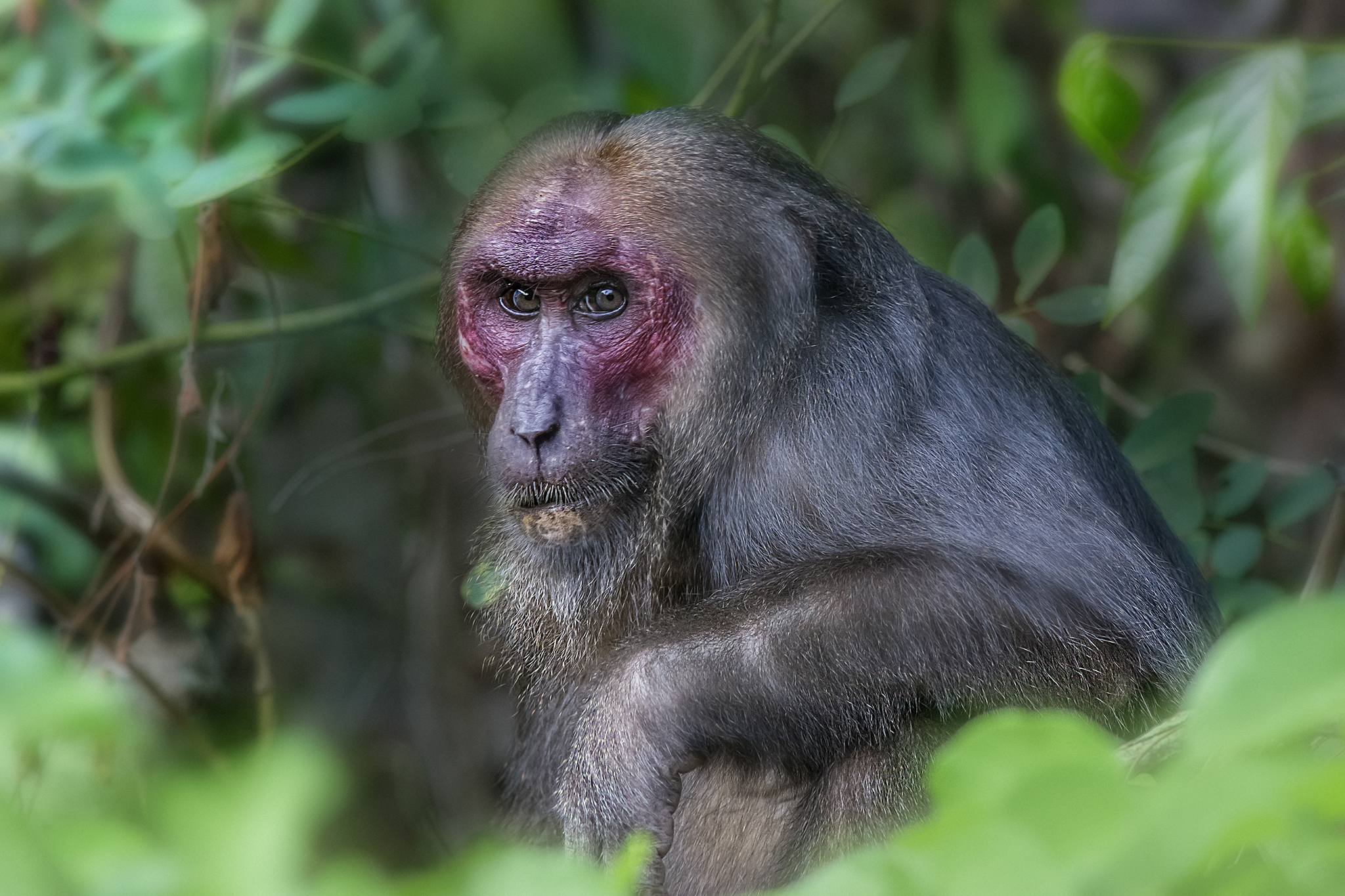The stump-tailed macaque, also known as the bear macaque or the southern pig-tailed macaque, is a species of Old World monkey native to Southeast Asia. Its scientific name is Macaca arctoides.
These macaques inhabit various types of forest environments, including tropical rainforests, deciduous forests, and mangrove swamps, across countries such as Thailand, Myanmar, Malaysia, Laos, and Vietnam. They are highly adaptable and can also be found in disturbed habitats near human settlements.
Stump-tailed macaques have a distinctive appearance characterized by their short tails, which resemble stumps, giving them their name. They have a stocky build with a dark brown or black fur coat. Their faces are hairless and adorned with prominent cheek pouches, which they use to store food for later consumption.
These macaques are omnivorous, feeding on a wide variety of food items including fruits, seeds, leaves, insects, small mammals, and bird eggs. They are known for their opportunistic feeding behavior and are often seen foraging on the forest floor as well as in the trees.
Stump-tailed macaques live in social groups, typically consisting of several adult females, their offspring, and a dominant male. These groups exhibit complex social structures with hierarchies established through dominance interactions. They communicate with each other through vocalizations, facial expressions, and body postures.
While the stump-tailed macaque is not considered endangered, it faces threats from habitat loss due to deforestation, hunting for meat and the pet trade, and human-wildlife conflict in areas where they come into contact with agricultural activities. Conservation efforts are underway to protect their habitats and populations across their range.
Views: 231
Subscribe to the newsletter:
